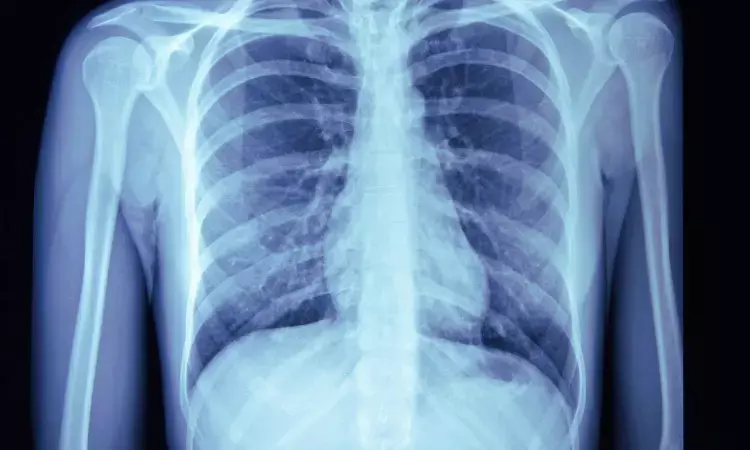- Home
- Medical news & Guidelines
- Anesthesiology
- Cardiology and CTVS
- Critical Care
- Dentistry
- Dermatology
- Diabetes and Endocrinology
- ENT
- Gastroenterology
- Medicine
- Nephrology
- Neurology
- Obstretics-Gynaecology
- Oncology
- Ophthalmology
- Orthopaedics
- Pediatrics-Neonatology
- Psychiatry
- Pulmonology
- Radiology
- Surgery
- Urology
- Laboratory Medicine
- Diet
- Nursing
- Paramedical
- Physiotherapy
- Health news
- Fact Check
- Bone Health Fact Check
- Brain Health Fact Check
- Cancer Related Fact Check
- Child Care Fact Check
- Dental and oral health fact check
- Diabetes and metabolic health fact check
- Diet and Nutrition Fact Check
- Eye and ENT Care Fact Check
- Fitness fact check
- Gut health fact check
- Heart health fact check
- Kidney health fact check
- Medical education fact check
- Men's health fact check
- Respiratory fact check
- Skin and hair care fact check
- Vaccine and Immunization fact check
- Women's health fact check
- AYUSH
- State News
- Andaman and Nicobar Islands
- Andhra Pradesh
- Arunachal Pradesh
- Assam
- Bihar
- Chandigarh
- Chattisgarh
- Dadra and Nagar Haveli
- Daman and Diu
- Delhi
- Goa
- Gujarat
- Haryana
- Himachal Pradesh
- Jammu & Kashmir
- Jharkhand
- Karnataka
- Kerala
- Ladakh
- Lakshadweep
- Madhya Pradesh
- Maharashtra
- Manipur
- Meghalaya
- Mizoram
- Nagaland
- Odisha
- Puducherry
- Punjab
- Rajasthan
- Sikkim
- Tamil Nadu
- Telangana
- Tripura
- Uttar Pradesh
- Uttrakhand
- West Bengal
- Medical Education
- Industry
Deep learning model can identify lung cancer mortality on chest X-rays: Study

USA: A new study has shown that an AI (artificial intelligence) model can identify people at risk of lung disease mortality on readily available X-rays; this could improve personalized treatment and prevention strategies.identify
"Our findings motivate using deep learning to identify people at high risk of mortality from lung cancer on easily obtainable and low-cost chest radiograph images," the researchers wrote in their study published in Nature Communications.
Jakob Weiss, Harvard Institutes of Medicine, Boston, MA, USA, and colleagues proposed a deep-learning convolutional neural network (CNN) model, CXR-Lung-Risk, to estimate the lung disease mortality risk using a chest radiograph as the only input. The model performed well in three independent testing datasets comprising more than 15,000 individuals.
Chest X-ray is a standard preliminary test for lung cancer. Yet, the researchers explained that actionable radiological findings are challenging to detect by human readers in the disease's early stages. They suggest that AI may provide an early window into the extent and risk of lung disease beyond established methods.
In their previous study, the researchers have shown using chest X-rats that AI can enhance survival predictions in lung cancer based on a patient's biological age. They also revealed that a deep-learning model could predict a patient's 10-year mortality risk from a stroke or heart attack.
They developed a deep learning model, CXR Lung-Risk, to predict the risk of lung disease mortality from a chest x-ray. The model was trained using 147,497 x-ray images of 40,643 individuals and tested in three independent cohorts of 15,976 individuals (35 and 90 years of age). The cohorts were:
- An asymptomatic community population;
- Heavy smokers eligible for lung cancer screening CT exams enrolled in NLST; and
- Patients with histologically confirmed early-stage (I-III) lung cancer.
The study revealed the following findings:
· After adjusting for risk factors, including age, smoking, and radiologic findings, CXR-Lung-Risk discriminated between individuals at high versus low risk for lung disease mortality, according to the findings.
· The lowest mean CXR-Lung-Risk (63 years) was found on x-rays in the asymptomatic screening population without known lung cancer.
· Patients in the NLST had a higher CXR-Lung-Risk on average (mean, 66.1 years), while the model estimated the highest mean risk of 70.5 years in patients with histologically confirmed lung cancer.
To conclude, the CXR Lung-Risk addition to a multivariable model improved estimates of lung disease mortality in all cohorts.
"We found that CXR Lung-Risk showed a graded association with lung disease mortality after adjustment for risk factors, including age, smoking, and radiologic findings," the researchers wrote.
Reference:
Weiss, J., Raghu, V. K., Bontempi, D., Christiani, D. C., Mak, R. H., Lu, M. T., & Aerts, H. J. (2023). Deep learning to estimate lung disease mortality from chest radiographs. Nature Communications, 14(1), 1-10. https://doi.org/10.1038/s41467-023-37758-5
Dr Kamal Kant Kohli-MBBS, DTCD- a chest specialist with more than 30 years of practice and a flair for writing clinical articles, Dr Kamal Kant Kohli joined Medical Dialogues as a Chief Editor of Medical News. Besides writing articles, as an editor, he proofreads and verifies all the medical content published on Medical Dialogues including those coming from journals, studies,medical conferences,guidelines etc. Email: drkohli@medicaldialogues.in. Contact no. 011-43720751


